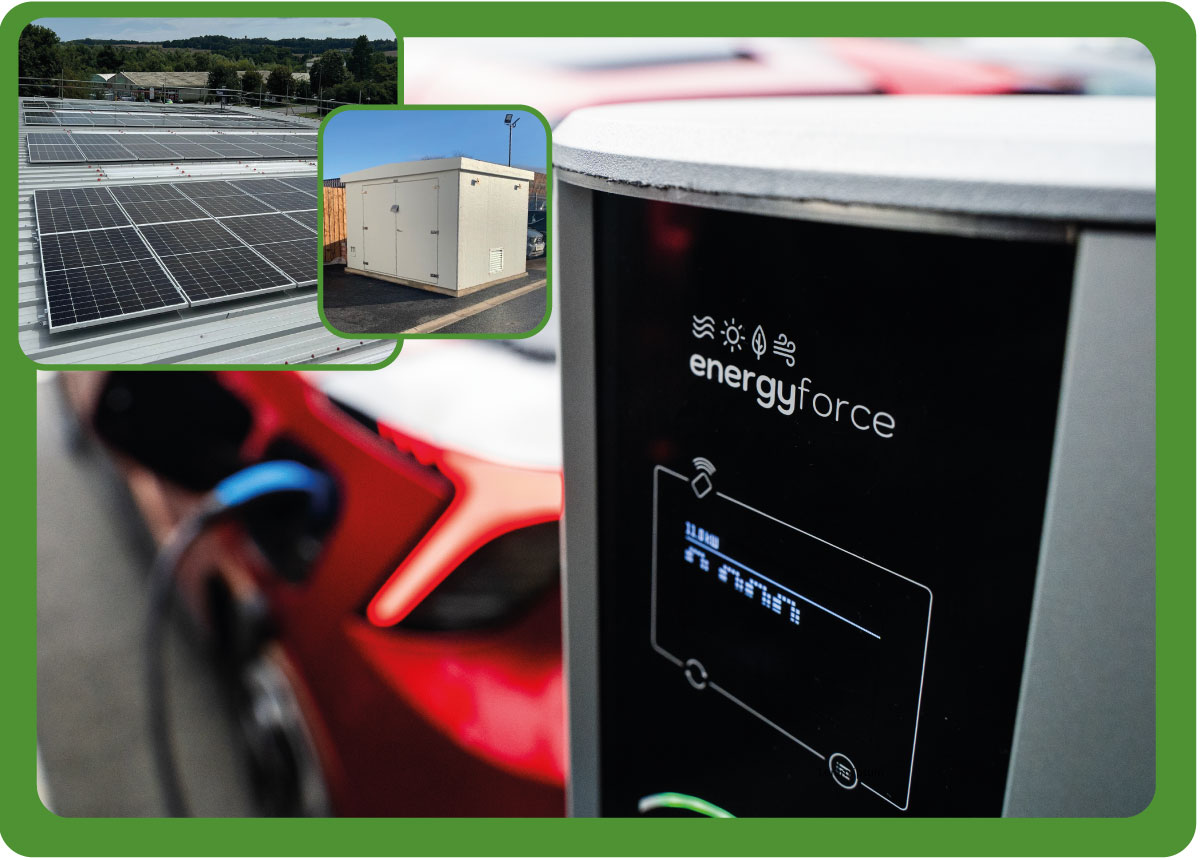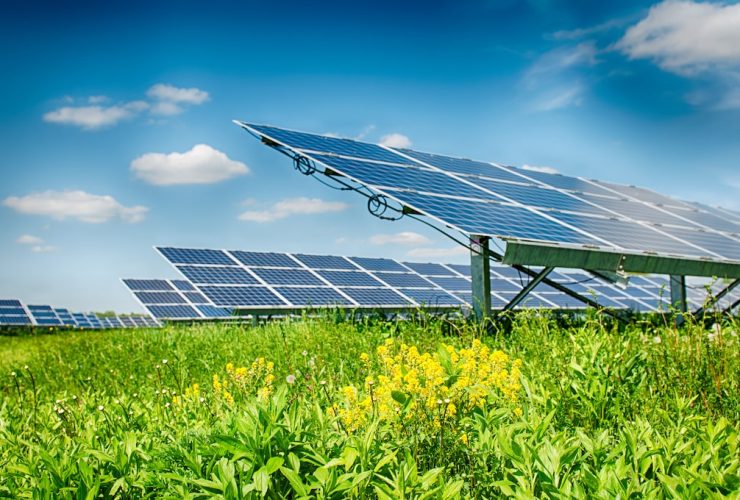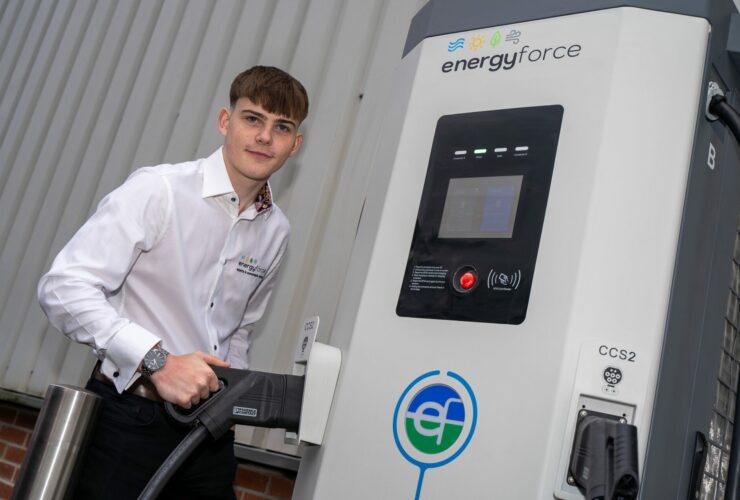The New Era of Integrated Energy Strategy: Why UK Businesses Must Act Now
Whether you’re a homeowner or a business leader, the sight of solar panels has become a familiar one—perched on rooftops, nestled in car parks, or spread across industrial estates. For years, Solar PV technology has offered a reliable means of capturing energy from the sun, and it’s helped countless homes and businesses cut costs and reduce their environmental impact.
But today, the conversation around sustainable energy has evolved. It’s no longer just about installing a few panels and EV chargers for your staff or customers and hoping for the best. As Martin Bleasby, Director at Energy Force UK, one of the country’s leading voices in sustainable energy, explains: “We’re entering a new era of holistic planning—one where energy use, generation and storage needs to be completely aligned with a company’s wider strategy.”
A Wake-Up Call for High-Energy Users
For UK companies with significant energy usage—whether in manufacturing, warehousing, logistics, or retail—the pressure is rising from all directions. Energy costs remain volatile. Net zero targets are tightening. Customers, regulators and investors are demanding greater transparency around ESG (Environmental, Social, and Governance) performance.
In this environment, companies can no longer afford to treat energy as an afterthought. Instead, they need an integrated strategy that looks at how to reduce consumption, maximise generation, and store or shift energy intelligently.
For companies with ambitious plans and rising energy needs, upgrading grid connections can be hugely expensive, and in some cases unnecessary.
Taking a careful look at the energy you generate on-site, plus how, when and where you use it, can at worst delay expensive upgraded grid connections, and at best eliminate them.
What’s more, the company you choose to develop your grid connection is also key, with variances in charges being as much as 40% across different sustainable energy providers.
According to Martin, the solution to this is down to planning. Time spent at this stage can save £000’s in both disruption and costs.
Solar OPV, EV Charging and Battery Storage: A Unified Approach
Many UK companies have already dipped their toes into sustainable energy. But Martin warns that, in the rush to go green, mistakes were made. “We’ve seen installations where panels were poorly sited, systems weren’t correctly sized, or maintenance was overlooked. As a result, performance dropped off within a few years—or was never delivered at all.”
The lessons are clear: piecemeal approaches lead to underperformance and wasted investment.
Instead, today’s smart businesses are thinking bigger and longer term. They’re asking:
- What will our future energy demand look like?
- How can we optimise our return on investment across multiple technologies?
- How can our energy strategy support ESG compliance and enhance business resilience?
A truly integrated energy strategy incorporates key elements:
- Security of electrical supply & Capacity
As our reliance becomes greater with increasing electrical demands such EV and heat pumps having sufficient capacity and the right electrical infrastructure is crucial. This could be from a direct connection to the grid or through the introduction of other technologies such as Solar and battery storage. - Solar PV (Photovoltaics): As a proven technology that can provide relatively quick returns, its not surprising that we are witnessing many increasing installations not only on roofs and fields but also in car parks and integrated into building facades. It opens new opportunities for energy generation in constrained environments.
- EV Charging Infrastructure: As fleets electrify and employees shift to electric vehicles, demand for workplace charging is growing. Businesses that install EV charging not only support their sustainability goals but also attract eco-conscious staff and customers.
- A Slow Return To The Office: Many companies are now experiencing a partial or full-return to the office for their employees. Not only does this create space challenges, but also increased power demand, and request for systems such as EV charging.
- Battery Storage Solutions: With energy storage, businesses can capture excess solar generation during the day and use it during peak periods—reducing grid reliance and costs. Advanced systems can also enable participation in grid-balancing schemes or time-of-use optimisation. Battery storage can help change the demand profile shape attracting lower electricity bills.
- Balancing & Ancillary Markets
Participation in one of the many ancillary or grid balancing services not only helps the resilience of the UK electricity network but also provide opportunity to generate additional revenue to help increase the investment opportunity.
When designed together, these systems don’t just perform—they transform. They create a dynamic energy ecosystem that responds to your business’s needs, adapts as you grow, and delivers tangible results for decades.
Planning for the Long Term
According to Martin, the key to success is integration—both technically and strategically.
“Too often, energy is treated in isolation from business planning,” he says. “But your energy strategy should sit alongside your growth strategy, operations, and ESG goals. It’s not just about what’s installed today, but how that system can evolve with your business.”
This includes understanding:
- What your peak energy demands are, and when they occur
- How to monitor and benchmark performance across your site(s)
- How to extend or adapt your system as demand changes
- How to export excess energy efficiently—or use it elsewhere within your operations
The Missing Link: Monitoring and Maintenance
One of the most overlooked parts of the sustainable energy journey is what happens after the install.
Across the UK, countless companies have legacy systems from different providers. The result? Incompatible platforms, siloed data, and an incomplete picture of what’s being generated, when, and where. Without integration, businesses can’t see if their systems are underperforming—let alone optimise them.
Worryingly, research suggests that up to one-third of Solar PV systems in the UK may be underperforming—often without the owner’s knowledge. The causes range from simple inverter faults and panel soiling to faulty connectors or communication issues between monitoring equipment.
According to Martin, the solution is clear: “Monitoring and maintaining your energy systems is just as important as the initial installation. Small faults can have a big impact on output, safety —and on your bottom line.”
With smart monitoring systems, EnergyForce clients gain full visibility across all integrated technologies—Solar PV, EV charging, and battery storage. This means they can:
- Identify performance issues before they escalate
- Track energy generation and consumption in real time
- Schedule proactive maintenance
- Optimise load usage and energy export
- Make informed decisions about future expansion
A structured maintenance regime doesn’t have to be complex. Even basic steps—like cleaning panels, firmware updates, and connection checks—can significantly improve performance and lifespan. When combined with remote monitoring and alert systems, businesses gain the confidence that their investment is always working as hard as it should be.
One Size Doesn’t Fit All
With hundreds of installations completed across the UK, Energy Force understands that no two businesses are the same. Each site has different challenges—land availability, roof shapes, energy profiles, grid connections, future plans—and each requires a solution tailored to its specific needs.
This is why EnergyForce doesn’t just install solar panels, ev chargers or batteries—they deliver future-proofed energy plans. Their approach ensures that clients aren’t just buying hardware, but building resilience, cutting emissions, and improving profitability for years to come.
Final Thoughts
In a world where sustainable business practices are becoming non-negotiable, an integrated energy strategy isn’t just a nice-to-have—it’s a competitive advantage. By aligning your operations with smart, scalable solutions like Solar, EV charging, and battery storage, your business can reduce risk, lower costs, and lead the charge toward a net-zero future.
Ready to take the next step? Talk to Energy Force and discover how a tailored energy strategy can power your business forward—today and tomorrow.




